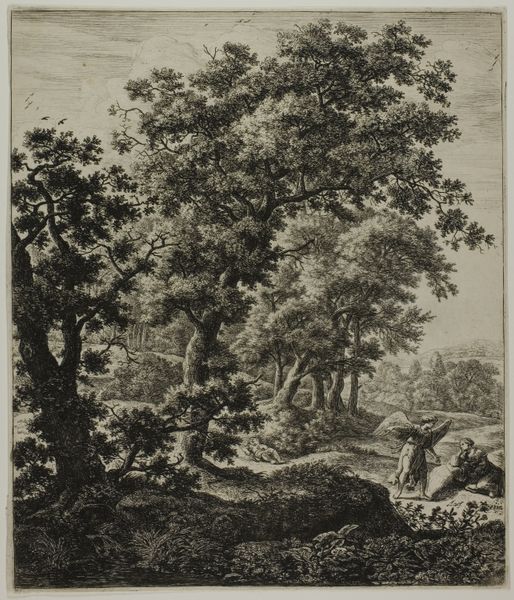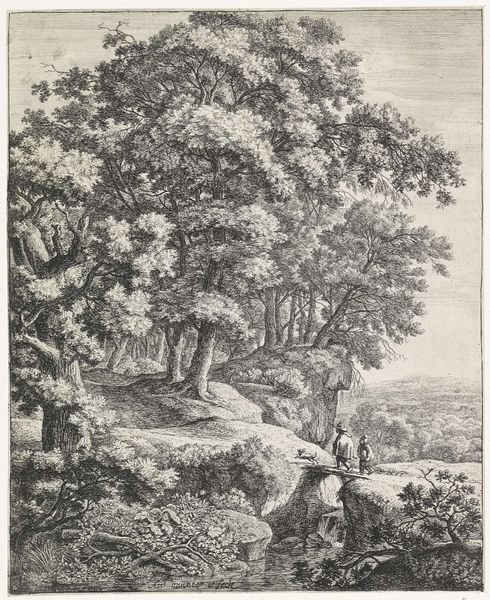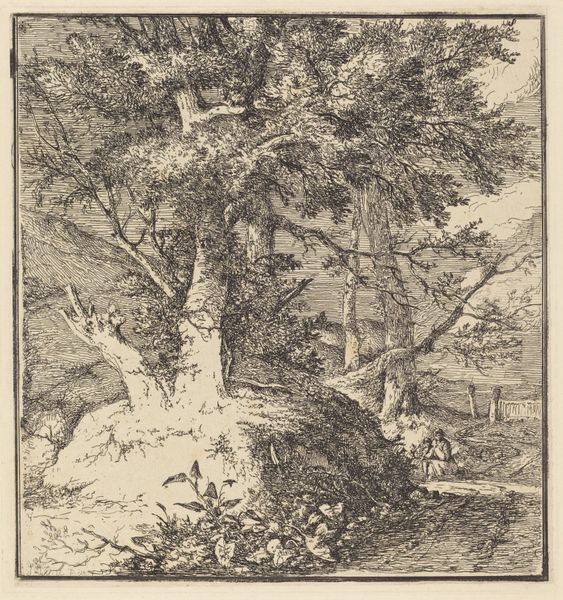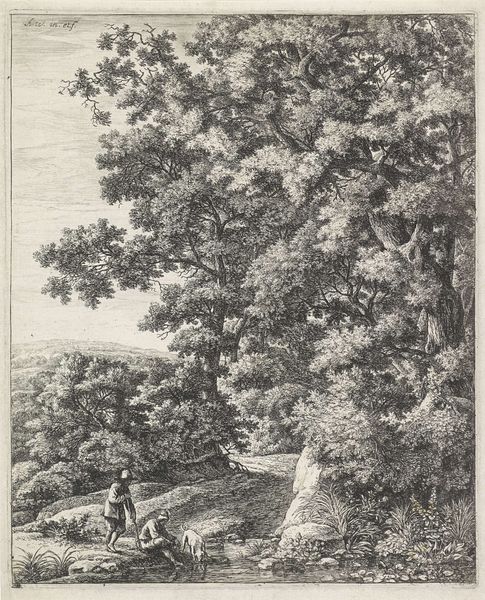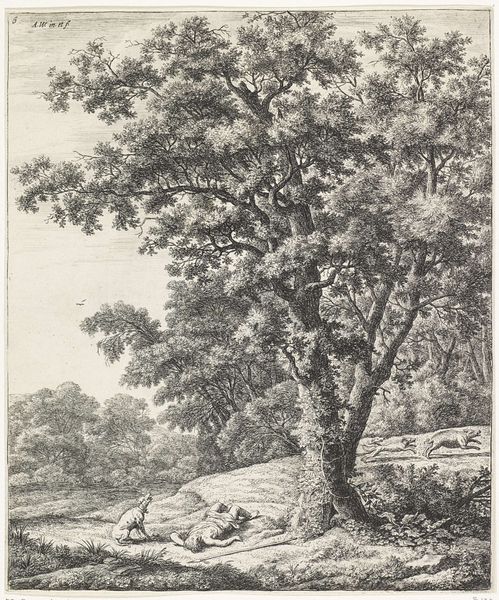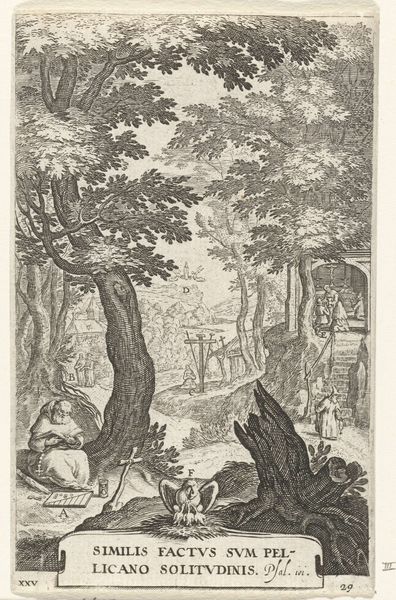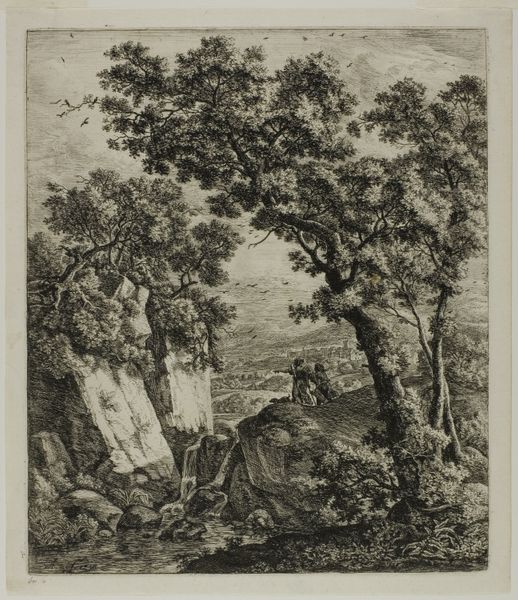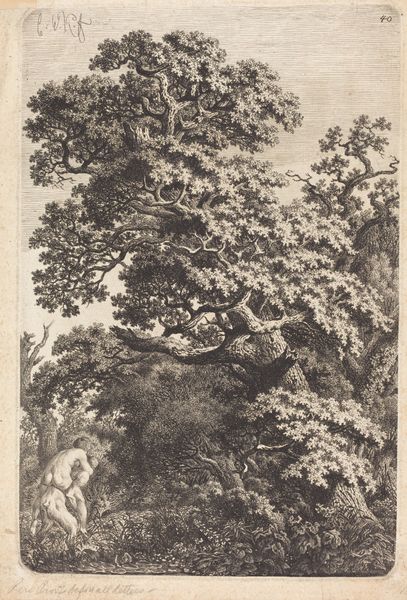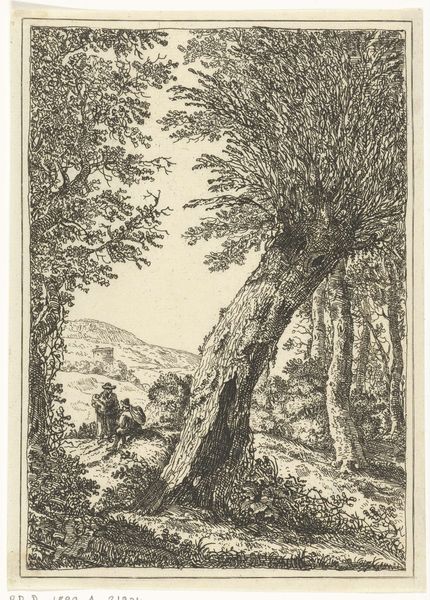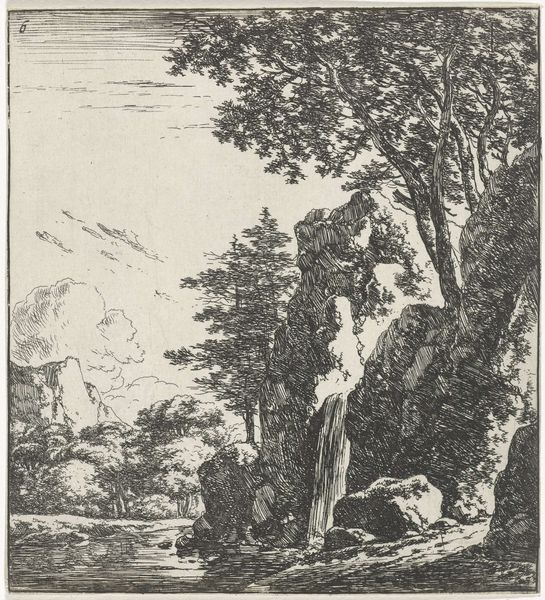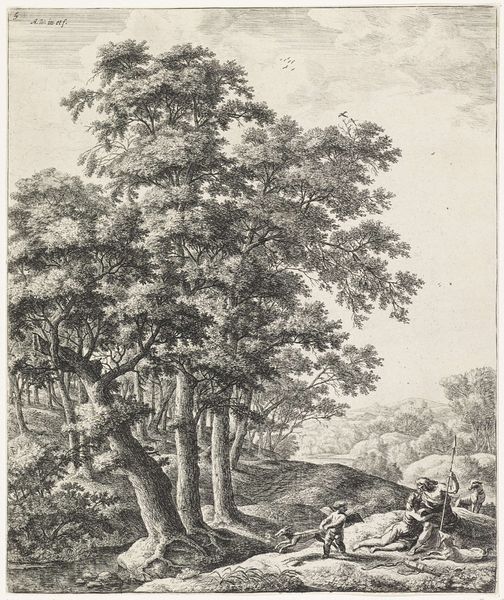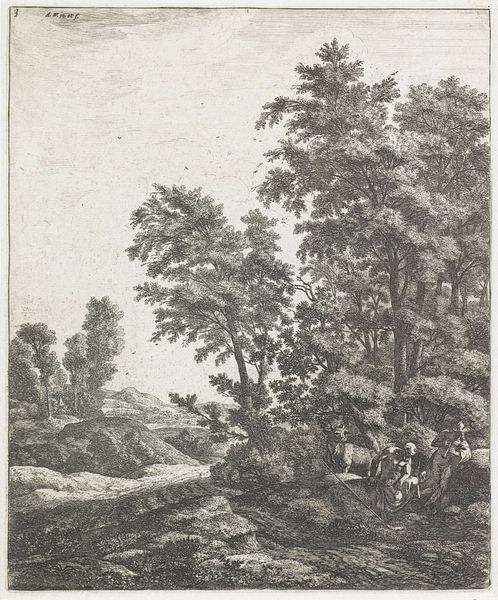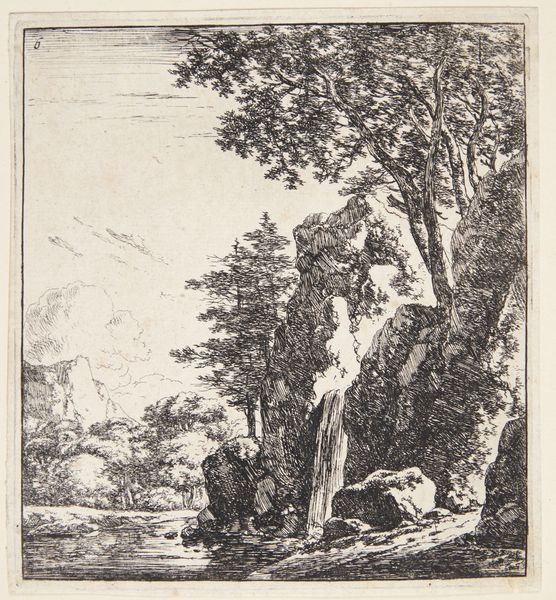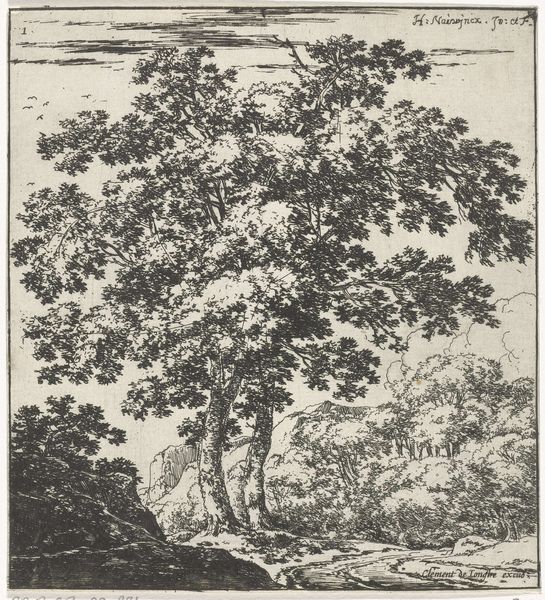
#
pencil drawn
#
natural shape and form
#
light pencil work
#
natural formation
#
organic shape
#
pencil sketch
#
old engraving style
#
incomplete sketchy
#
forest
#
pen-ink sketch
#
watercolor
Dimensions: height 295 mm, width 245 mm
Copyright: Rijks Museum: Open Domain
Editor: Here we have "Pan en Syrinx," possibly created between 1630 and 1690 by Anthonie Waterloo. It looks like a pen-and-ink sketch of a forest scene. I'm struck by how dramatic the figures are in contrast to the detailed landscape. What do you see in this piece, considering its historical context? Curator: This piece invites us to consider power dynamics and transformation. We see Pan, a figure often associated with masculine power and unchecked desire, pursuing Syrinx, who is fleeing. This pursuit, rendered in the delicate lines of the print, speaks volumes about the precariousness of bodily autonomy. The forest itself becomes a stage for this drama, a space where the personal and political intersect. What do you make of the artist’s choice to depict this particular moment? Editor: Well, it makes me think about the story of Daphne and Apollo, also involving a chase and transformation. Is Waterloo drawing parallels to other myths, highlighting the vulnerability of women in these narratives? Curator: Precisely! By placing this scene within a larger framework of mythology and art history, we can begin to unpack how these narratives have historically reinforced unequal power structures. Think about the male gaze, how the woman’s body is presented as an object of desire and pursuit. Do you think that Waterloo challenges this at all? Editor: I'm not sure. I mean, it does feel critical, showing Pan almost as a grotesque figure. Perhaps there's a commentary on unchecked male privilege there? Curator: It's a great start. Look at the foliage around Syrinx, too. It seems to almost engulf her. Consider how landscape in art so often symbolically interacts with identity and oppression in the narratives we see in these kinds of artworks. Editor: I never considered the forest to have such significance! I see it now; it's more than just background. Thanks for shedding light on this. Curator: My pleasure. It's crucial we continue to have conversations that analyze the complicated issues of gender and power represented in art.
Comments
No comments
Be the first to comment and join the conversation on the ultimate creative platform.
